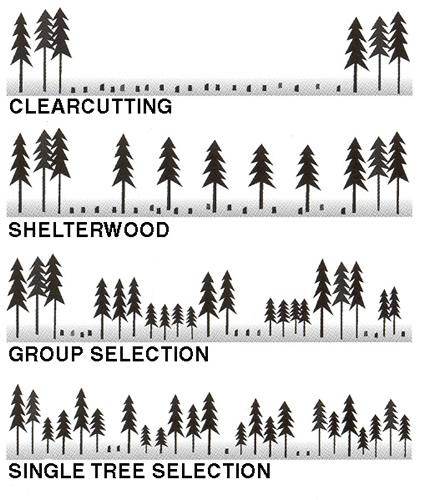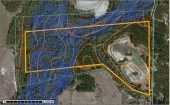














Dave's SKIP BB's / Welcome to Permies! / Permaculture Resources / Dave's Boot Adventures & Longview Projects














 2
2












 2
2




Pecan Media: food forestry and forest garden ebooks
Now available: The Native Persimmon (centennial edition)
 2
2








 2
2




 1
1




caleb matheny wrote:
I do not want to use my pasture, as I am wanting to have some livestock (dairy cow- though i may have to subsidize with hay, and thats ok) but I just can't see myself having no pasture. All advice is appreciated.
My project thread
Agriculture collects solar energy two-dimensionally; but silviculture collects it three dimensionally.








My project thread
Agriculture collects solar energy two-dimensionally; but silviculture collects it three dimensionally.








Pecan Media: food forestry and forest garden ebooks
Now available: The Native Persimmon (centennial edition)












alex Keenan wrote:
If you cut in winter you will likely have an opportunity to mushroom plug some of your hardwood stumps.
In fact you may wish to identify which of your hardwoods you are likely to remove that can be used for mushroom logs.
My project thread
Agriculture collects solar energy two-dimensionally; but silviculture collects it three dimensionally.













My project thread
Agriculture collects solar energy two-dimensionally; but silviculture collects it three dimensionally.




My project thread
Agriculture collects solar energy two-dimensionally; but silviculture collects it three dimensionally.




 1
1




Zone 5/6
Annual rainfall: 40 inches / 1016 mm
Kansas City area discussion going on here: https://www.facebook.com/groups/1707573296152799/




 . Permaculture will almost always look for a path that makes the most of what is already there and adds to it what will most benefit from the existing situation, while providing greatest utility to us, the designers. Look for maximum return on minimum effort and you are probably looking at the most permaculture approach.
. Permaculture will almost always look for a path that makes the most of what is already there and adds to it what will most benefit from the existing situation, while providing greatest utility to us, the designers. Look for maximum return on minimum effort and you are probably looking at the most permaculture approach.






Dave's SKIP BB's / Welcome to Permies! / Permaculture Resources / Dave's Boot Adventures & Longview Projects


















 1
1




 .
.


 1
1




Peter Ellis wrote:Looking at your video (it was not working for me earlier today) I have to say that your forest looks to me like fairly young secondary growth. Mostly young trees, pretty open canopy or you would not have so much understory brush. My inclination would be to get in there and clear the understory, cut out any unhealthy looking trees of whatever size or variety, and then go through and very selectively choose the useful/productive/beneficial trees that I was going to keep. Once the keepers were identified, I would think about what I was going to do with the rest. Firewood? Mushroom culture? Construction projects? Take the time to figure out what to do with which before the cutting starts
.
Then when I started cutting, I would work the plan, with the trees going to whatever their assigned purpose, trying to work as efficiently as possible. I might layout a grid pattern and work section by section, doing all of the felling and hauling out of one area at a time. Figure what progression through the layout would be most efficient in terms of overall effort. For example, you might not want to start by the creek and have to try and haul trees back through all the other trees. It might make more sense to start at the front, so each section further back you were dragging through more open terrain.
It might make sense to do all the way across the meadow side, plant some of your food forest trees in a couple of those sections to get them started and then keep working the back sections pulling them out through an open section at the front where you don't plant food forest yet.
I would think about productive understory trees, like hazelnuts and pawpaws that will benefit from your existing trees. I understand some serviceberries also like the understory and some say they are tastier than blueberries.
I would definitely consider running goats or pigs to clear much of the underbrush for me and convert it into useful products. Permaculture always seeks a yield.
Using electric fencing, as demonstrated by Polyface Farms, could make that more possible than you might expect.




Pecan Media: food forestry and forest garden ebooks
Now available: The Native Persimmon (centennial edition)





 1
1




 , but I read the big book (permaculture design manual) three times and watched the $400 CD lecture series probably a dozen times. That's the entire course, so... I've also read up on Joel Salatin and every other dude who publishes - Ben Falk, Sepp Holtzer, Toby Hemenway, Mark Shepard, watched the CSU Hooker course... Do the course, read those books and then go to somebody else's property and design that to be your ideal - after doing the course. Then return to your own property with fresh eyes.
, but I read the big book (permaculture design manual) three times and watched the $400 CD lecture series probably a dozen times. That's the entire course, so... I've also read up on Joel Salatin and every other dude who publishes - Ben Falk, Sepp Holtzer, Toby Hemenway, Mark Shepard, watched the CSU Hooker course... Do the course, read those books and then go to somebody else's property and design that to be your ideal - after doing the course. Then return to your own property with fresh eyes.
 3
3






 4
4




Benjamin Sizemore wrote:
The most productive areas on Earth are oak savannah, which is stands of trees with open area in between. You are in a unique position to pull a yield (nuts) from the mature trees - starting now - and inter crop another yield in the open areas. The shocking oversight by all ranchers is the benefit of shade to grazing animals and the effect of edges on productivity. So, you can run pigs and chickens in the shady leaf litter starting now - pigs will find all the nuts and the chickens will gorge themselves on the bugs and worms under the leaf litter... then they will eliminate the TICKS you are bound to get (until you got chickens).
My project thread
Agriculture collects solar energy two-dimensionally; but silviculture collects it three dimensionally.
 1
1




Cj Verde wrote:
Benjamin Sizemore wrote:
The most productive areas on Earth are oak savannah, which is stands of trees with open area in between. You are in a unique position to pull a yield (nuts) from the mature trees - starting now - and inter crop another yield in the open areas. The shocking oversight by all ranchers is the benefit of shade to grazing animals and the effect of edges on productivity. So, you can run pigs and chickens in the shady leaf litter starting now - pigs will find all the nuts and the chickens will gorge themselves on the bugs and worms under the leaf litter... then they will eliminate the TICKS you are bound to get (until you got chickens).
I agree with much of what Benjamin said but... Mangroves are the most productive areas on Earth.
Chickens are OK with ticks but they wont eliminate ticks. I've got at least 30 free range chickens in a relatively small area <2 acres and the dogs got plenty of ticks and I had to remove 4 off of myself. I think I'll try Gunea fowl next spring as they are supposed to be much better tick eaters.
8 acres is a big area to fence in. If you let the chickens run free you wont have to feed them thru much of the year but you wont get many eggs & you'll have lots of roosters to cull (good for soup). I would not want pigs free ranging over 8 acres - I'd need a gun to feel safe walking around because they would have no problem eating me!









|
ice is for people that are not already cool. Chill with this tiny ad:
Learn Permaculture through a little hard work
https://wheaton-labs.com/bootcamp
|





